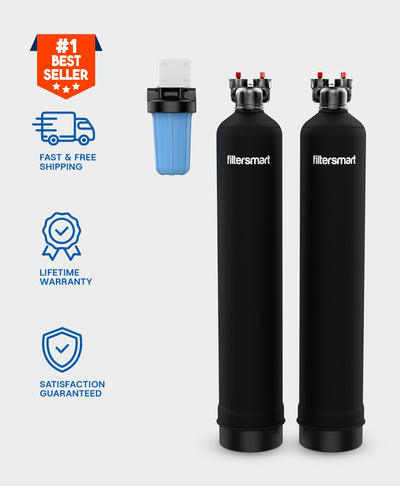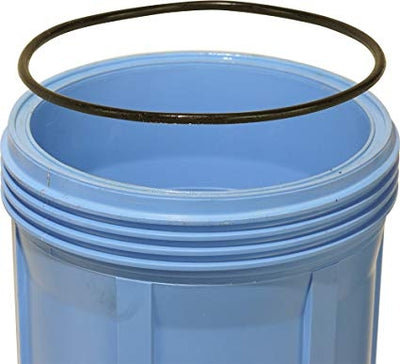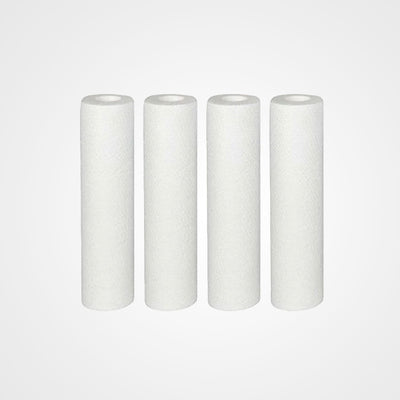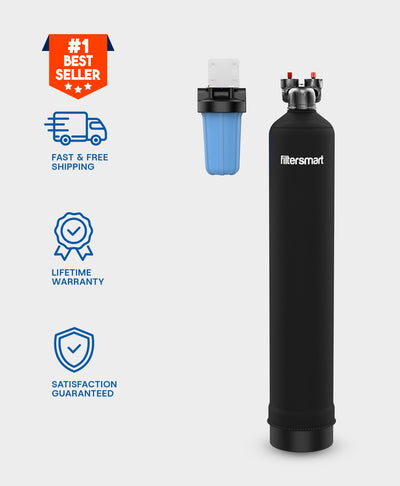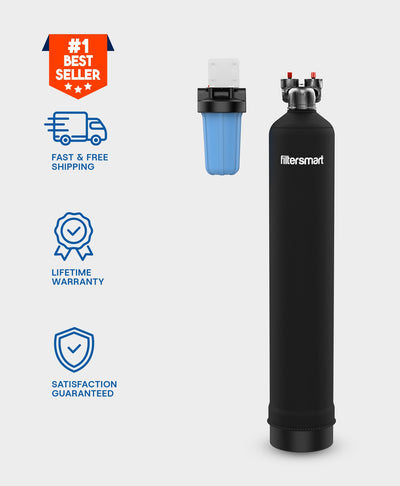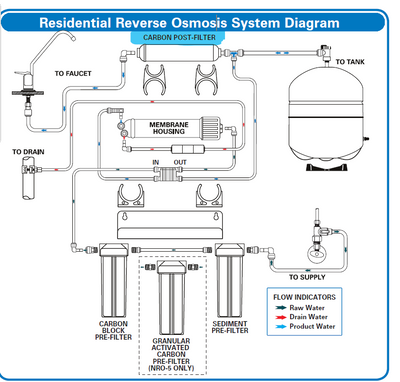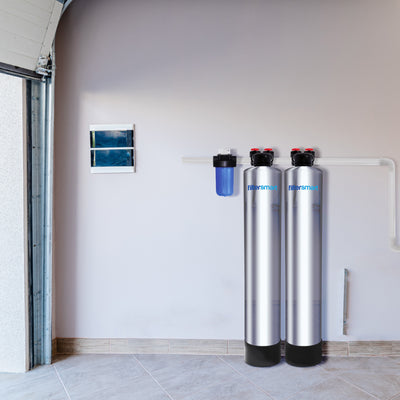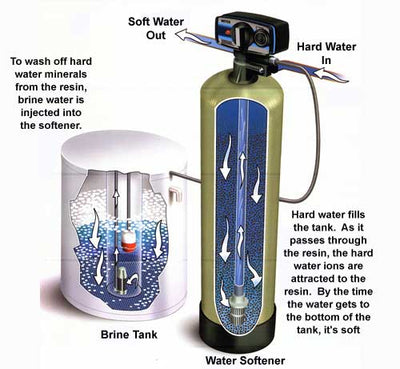The increase in water pollution over the last decade has led to a spike in demand for water filters worldwide.
And the US is no exception. Indeed, several recent studies showing contaminated water supplies in 43 states have fueled this trend, sparking a strong interest in water filters among Americans. As a result, one-third of the American population is now using a water filter.
So, are you wondering whether you should invest in one too?
In this post, we’ll explain how water filters work before detailing the benefits of home water filters and how to ensure your tap water is safe to drink.
How Do Water Filters Work?
Water filtration refers to the process of removing or decreasing the concentration of harmful contaminants in water, such as organic and inorganic compounds, chemicals, bacteria, and parasites. Water filtration is critical to allowing us to remain hydrated as it turns contaminated water into safe drinking water, delivered straight to our tap.
Water filters usually use either a physical or chemical filtration method to purify water.
- Physical filtration: In a physical filtration process, water is strained through a gauze-like membrane to eliminate solids, fluids, and large particles.
- Chemical filtration:The chemical filtration process uses a media to filter harmful contaminants such as heavy metals, fine sedimentation, and organic material.
The most popular filtration systems use both physical and chemical filtration:
Activated Carbon
The most common type of filter used in American households is called activated carbon granules. These filters work using activated charcoal, a form of carbon that has been treated with oxygen to open up millions of pores (or bonding sites). When specific chemicals present in contaminated water such as chlorine, herbicides, or pesticides are near activated charcoal or carbon, they’re naturally attracted to it and bind onto the pores, where they’re trapped. However, note that activated carbon filters do not filter things such as nitrates or sodium.
Reverse Osmosis
During the reverse osmosis water filtration process, external pressure is applied to contaminated water, forcing it through a semi-permeable membrane that traps 99% of dangerous contaminants, allowing only water to pass through. This is the most effective type of water filter available on the market.
Ion Exchange
Ion exchange filters are extremely efficient at reducing the water hardness. Hard water refers to water containing a high amount of calcium and magnesium ions. Now, these minerals can build up and create limescale in your appliances, damage your clothes, stain your fixtures and dishware as well as dry your skin and hair. Ion exchange filters contain beads of a polymer resin specifically designed to trap magnesium and calcium ions along with heavy metals.
Distillation
Distilled water goes through a distillation process that involves boiling the water to remove harmful contaminants, capturing the steam, and condensing it back into water. While efficient at removing some contaminants, it doesn’t remove harmful chemicals as well as purification processes such as ion exchange or reverse osmosis.
Key Benefits of Home Water Filtration Systems
-
Removing contaminants
-
Protecting the environment
-
Protecting your skin and your hair
-
Protecting your appliances and saving money
What’s more, having filtered water means that your appliances will keep running for longer. Indeed, mineral buildup can accumulate in your water-using appliances, clogging them and sometimes leading to leaks.
-
Improving the taste and smell of your water
If your water smells like rotten eggs or bleach, a water filter can solve the problem. Indeed, by purifying your water and removing larger particles such as chlorine or sulfur, a water filter can significantly improve the taste and smell of your drinking water.
Best Ways to Ensure your Tap Water is Safe
If you’re not sure whether your water is safe to drink, here are a few steps you can take to confirm:
- Check your water quality by visiting the EPA’s website (the United States Environmental Protection Agency) and entering your postcode to see water contaminants in your area.
- Contact your local municipality and ask for the latest Water Quality report.
- Purchase a testing water kit online and check for the most common contaminants such as lead, pesticides, hardness, chlorine, or nitrate.
However, to ensure your drinking water is always safe, the best course of action is to invest in a water filtration system. And the great news is that these days, there are many options on the market ranging from inexpensive $20 water pitchers to high-quality reverse osmosis systems costing a few hundred dollars. Consider your personal needs, such as the contaminants in your water supply, your household size, or your budget, before choosing a water filtration system.
Note that some of the best water filters include under-sink Spring RCC7, countertop Apex MR-1050 Alkaline, Faucet-attachment Brita SAFF-100, and under-sink Filtersmart RO system.
You can also check out our latest blog onFive Best Water Filtration Systems for High-Quality Tap Water.
We hope this article has provided you with some insightful information about the different types of water filtration systems and the benefits of purifying your drinking water. If you want to discuss your current needs, don’t hesitate to get in touch with us. We’re always happy to help!








